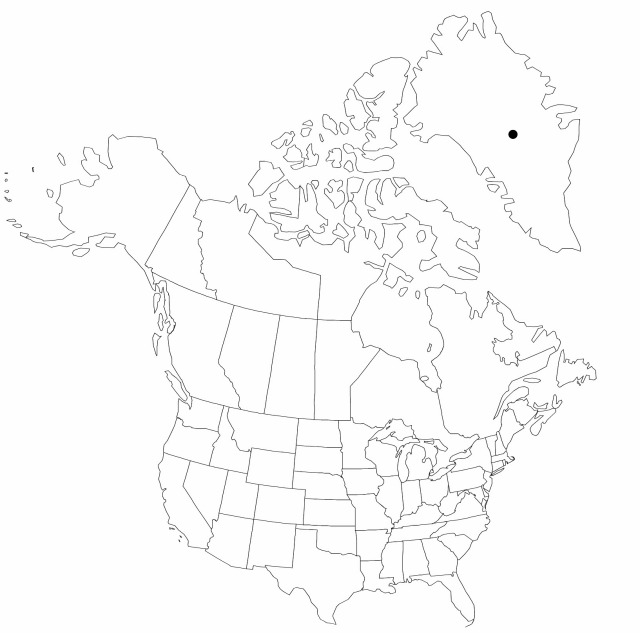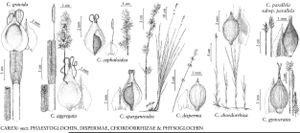Carex parallela subsp. parallela
Rhizomes ascending, cordlike, 0.5–1.4 mm in diam. Culms arising singly or, occasionally, 2(–4) together, weakly trigonous, distinctly furrowed, 5–30 cm; lateral sterile shoots conspicuously developed, curved. Leaf blades filiform, 1–9(–12) cm × 0.4–1 mm. Inflorescence a unisexual spike (68% pistillate, 30% staminate) or, rarely, gynecandrous (2%); staminate spikes 8–21 mm; pistillate spikes ± loosely 6–20-flowered, narrowly oblong to ellipsoid, 7–17 × 3–6 mm. Pistillate scales with margins yellowish, broad, scarious (almost hyaline), almost 1/2 width of central dark brown portion. Perigynia appressed to weakly spreading, reddish brown, 13–18-striate and 2-ribbed, ovate to oblong-ovate, plano-convex, 2.8–3.5 × 1–1.3 mm; beak 0.7–1 mm, margins glabrous. Achenes 1.6–2 × 0.9–1.3 mm. 2n = 43.
Phenology: Fruiting late Jul–Sep.
Habitat: Grassy lowland or montane tundras, moss-rich fens, dwarf-shrub heaths, hillside flushes, river bed and lakeshore mires, and other wet substrates
Elevation: 0–1100 m
Distribution

e Greenland (70–75° N), Europe (n Scandinavia), Asia (c Russia).
Discussion
In Greenland, Carex parallela subsp. parallela occurs only in the Middle-Arctic Tundra Zone (following A. Elvebakk 1985). Carex parallela subsp. redowskiana (C. A. Meyer) T. V. Egorova, which occurs in arctic Russia and the northern Ural Mountains, differs from subsp. parallela primarily in having the perigynia a little larger (3–4.4 mm), more strongly beaked, and horizontally spreading at maturity as in C. gynocrates. Carex parallela can be mistaken for C. dioica, from which it is distinguished by the relatively stout rhizomes and more loosely flowered, narrowly oblong (in the case of subsp. parallela) pistillate spikes (the staminate spikes in both are slender and pale). The mature perigynia are loosely to strongly appressed-ascending, usually narrower, and tend to be more sharply angled and more prominently beaked.
Intersectional hybrids with Carex lachenalii Schkuhr and C. maritima Gunnerus are known. The former hybrid is frequent in northeastern Greenland (T. W. Böcher et al. 1978) but more widespread in Finland, Sweden, and Norway (N. Hylander 1982). It seems to be rather uniform and in most characters intermediate between the parents. Carex maritima × C. parallela, an occasional hybrid in eastern Greenland (T. W. Böcher et al. 1978), more closely resembles C. parallela but has an ovoid terminal spike. Both hybrids may generally be distinguished from C. parallela by some or all of the following tendencies: terminal spike bisexual; 1–3 small accessory spikes at the base of the terminal one; perigynia small and misshapen; and achenes undeveloped.
Selected References
None.
